
Cayuga Heights is a village in Tompkins County, New York, United States and an upscale suburb of Ithaca. The village is in the Town of Ithaca, directly northeast of the City of Ithaca and Cornell University's main campus.

Andrew Dickson White was an American historian and educator who cofounded Cornell University and served as its first president for nearly two decades. He was known for expanding the scope of college curricula. A politician, he had served as state senator in New York. He was later appointed as an American diplomat to Germany and Russia, among other responsibilities.
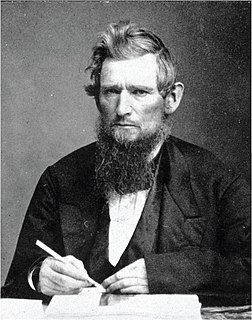
Ezra Cornell was an American businessman, politician, and philanthropist. He was the founder of Western Union and a co-founder of Cornell University. He also served as President of the New York Agriculture Society and as a New York State Senator.
The North London Railway (NLR) company had lines connecting the northern suburbs of London with the East and West India Docks further east. The main east to west route is now part of London Overground's North London Line. Other NLR lines fell into disuse but were later revived as part of the Docklands Light Railway, and London Overground's East London Line. The company was originally called the East & West India Docks & Birmingham Junction Railway (E&WID&BJR) from its start in 1850, until 1853. in 1909 it entered into an agreement with the London and North Western Railway which introduced common management, and the NLR was taken over completely by the LNWR in 1922. The LNWR itself became part of the LMS from the start of 1923. The railways were nationalised in 1948 and most LMS lines, including the North London route, then came under the control of the London Midland Region of British Railways.

Alonzo Barton Cornell was a New York politician and businessman who was the 27th Governor of New York from 1880 to 1882.

Amasa Stone, Jr. was an American industrialist who is best remembered for having created a regional railroad empire centered in the U.S. state of Ohio from 1860 to 1883. He gained fame in New England in the 1840s for building hundreds of bridges, most of them Howe truss bridges. After moving into railroad construction in 1848, Stone moved to Cleveland, Ohio, in 1850. Within four years he was a director of the Cleveland, Columbus and Cincinnati Railroad and the Cleveland, Painesville and Ashtabula Railroad. The latter merged with the Lake Shore and Michigan Southern Railway, of which Stone was appointed director. Stone was also a director or president of numerous railroads in Ohio, New York, Pennsylvania, Indiana, Illinois, Iowa, and Michigan.
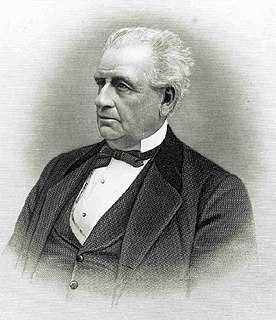
Hiram Sibley, was an American industrialist, entrepreneur, and philanthropist who was a pioneer of the telegraph in the United States.
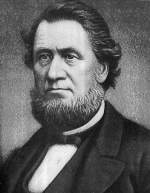
Henry Howland Crapo was a businessman and politician who was the 14th Governor of Michigan from 1865–1869, during the end of the American Civil War and the beginning of Reconstruction.

Thomas Marshall Howe was a Whig member of the U.S. House of Representatives from Pennsylvania. He was a Financier, Statesman, Manufacturer, and Philanthropist. He was considered the leading citizen of Pittsburgh of his day.

Charles Carter Comstock was a businessman and politician from the US state of Michigan.
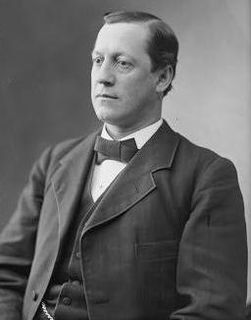
Elizur Kirke Hart was a U.S. Representative from New York.

Francis Ormand Jonathan Smith was a U.S. lawyer, legislator, and telegraph pioneer and financier.
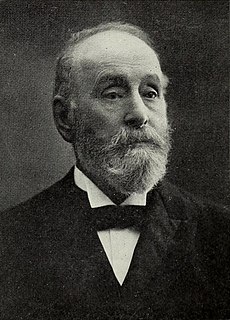
Ebenezer Oliver Grosvenor, Jr. was a politician from the U. S. state of Michigan.

Zalmon Gilbert Simmons Sr. was a businessman, manufacturer, Wisconsin legislator, and mayor of Kenosha, Wisconsin.
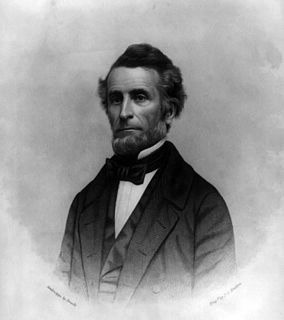
John James Speed, Jr. was an American farmer, merchant, politician, and pioneer in telegraphy.
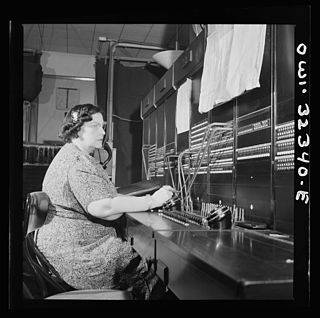
Women in telegraphy have been evident since the 1840s. The introduction of practical systems of telegraphy in the 1840s led to the creation of a new occupational category, the telegrapher, telegraphist or telegraph operator. Duties of the telegrapher included sending and receiving telegraphic messages, known as telegrams, using a variety of signaling systems, and routing of trains for the railroads. While telegraphy is often viewed as a males-only occupation, women were also employed as telegraph operators from its earliest days. Telegraphy was one of the first communications technology occupations open to women.

Doon is a suburban community and former village which is now a part of the city of Kitchener, Ontario, Canada. Doon was settled around 1800 by German Mennonites from Pennsylvania, and after 1830 by Scottish immigrants. The area is located at the confluence of Schneider Creek and the Grand River. The post office was opened in 1845. A large flour mill, oatmeal mill, distillery and sawmill were built on the Doon River over the following years. The Perine brothers established extensive linen works and flax mills near the settlement. By 1870, there was a single church, Presbyterian, a variety of tradesmen and a population of 200.
Orrin Squire Wood was one of early pioneers of the telegraph industry in the United States and Canada.
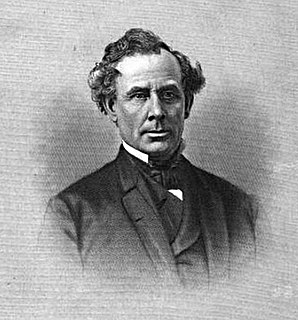
Stillman Witt was an American railroad and steel industry executive best known for building the Cleveland, Columbus and Cincinnati Railroad, Cleveland, Painesville and Ashtabula Railroad, and the Bellefontaine and Indiana Railroad. Through his banking activities, he played a significant role in the early years of the Standard Oil company. He was also one of the founding investors in the Cleveland Rolling Mill, a major steel firm in the United States.

The Ezra Cornell statue is a monumental statue in Ithaca, New York, United States. Located on the Arts Quad of the Cornell Central Campus, the monument honors Ezra Cornell, the co-founder and namesake of Cornell University. The statue, designed by Hermon Atkins MacNeil, was dedicated in 1919.

















